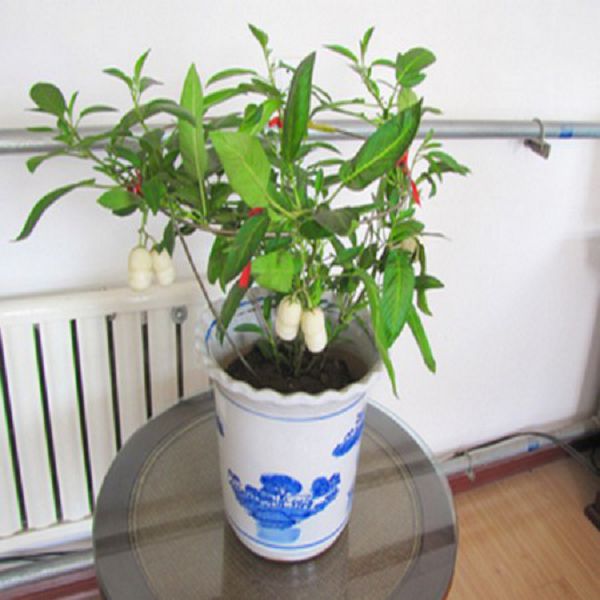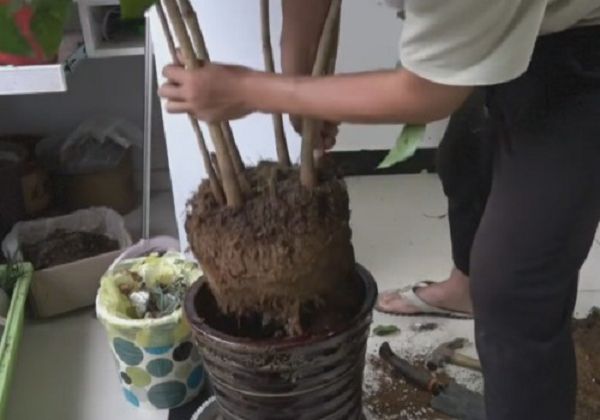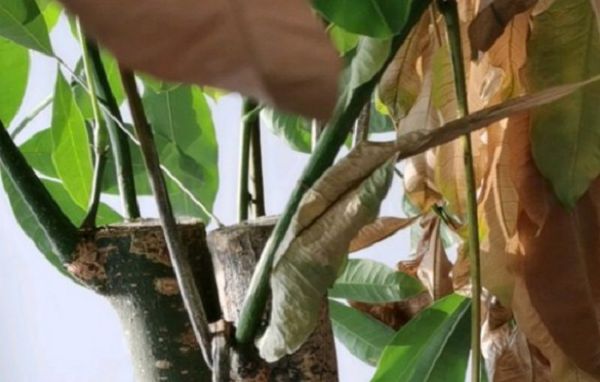Culture method of potted ginseng fruit

Ginseng fruit is a kind of highly nutritious fruit with delicate and juicy pulp, seedless belly, unique flavor, high protein, low fat and low sugar, rich in vitamin c and a variety of trace elements, among which zinc content is the highest. The so-called ginseng fruit is a kind of fruit originating in Wuwei area of China, which is rich in protein, vitamins and minerals and has health care effect. When the fruit is ripe, the pericarp is golden yellow and looks like a human heart. Its flesh tastes unique, it tastes crisp and juicy, and it is not sour or astringent, so it is a popular fruit.
Ginseng fruit is not only a good-looking fruit, but also rich in nutrients, which can help people to supplement the substances needed by the body. Originally, ginseng fruit is planted in the ground, but because it is generally loved by people in recent years, it has gradually become one of the more mainstream indoor potted ornamental plants. The price of ginseng fruit was hot at first, but now it has begun to level off and decline.
Only good cultivation of ginseng fruit to ensure its fruit setting rate and fruit quality, in order to ensure that the value and price of ginseng fruit will not be affected, so it is necessary to master some knowledge of breeding ginseng fruit.
1. Preparation of basin soil and upper basin: basin soil requires good water conservation, fertilizer conservation, water permeability and air permeability, and is rich in nutrients. Nutrient soil that is well equipped and easy to match is needed. Fertile old vegetable garden soil or rotten leaf soil 6-7 parts, rotten livestock and poultry manure or cake meal fertilizer 1-2 parts, yellow sand 2 parts. Nutritious soil must be fully mixed, it is best to pile up stuffy in advance and turn the pile many times. Before the flowerpot discharge, you can spread a layer of plastic film on the ground, and then discharge the flowerpot, so as to prevent the root system from drilling out of the flowerpot drainage hole into the soil, and cutting off the root when moving the flowerpot will cause plant wilting or death. To increase the distance between flowerpots. During the growth cycle, the flowerpot can be moved for 2 or 3 times according to the plant growth potential, so as to avoid excessive plant growth due to excessive density, thus inducing diseases and insect pests or affecting ornamental.
Basin soil: the basin soil requires good water conservation, fertilizer conservation, water permeability and air permeability, and is rich in nutrients. Fertile old vegetable garden soil or rotten leaf soil 6-7 parts, rotten livestock and poultry manure or cake meal fertilizer 1-2 parts, yellow sand 2 parts. Nutritious soil must be fully mixed, it is best to pile up stuffy in advance and turn the pile many times. Before the flowerpot discharge, you can spread a layer of plastic film on the ground, and then discharge the flowerpot, so as to prevent the root system from drilling out of the flowerpot drainage hole into the soil, and cutting off the root when moving the flowerpot will cause plant wilting or death.
Upper basin: from the seedling bed or open-field seedlings, select strong, short, beautiful seedlings and move them into a large mud basin or tile basin with good water and air permeability. When putting on the basin, first cover half of the hole in the bottom of the basin with tiles, and then cover it obliquely with another tile. You can also pad some gravel on the bottom of the basin, pad some coarse-grained soil on it, and finally fill it with nutritious soil. When planting, plant the seedlings in the middle of the basin, straighten them, and fill them with nutritious soil all around. When the nutritious soil is added to half, lift the seedlings up gently to stretch the roots, and then press the basin soil with your hands, 2cm-3cm away from the mouth of the basin. After planting, pour enough fixed root water and put it in a cool place for 3-5 days to improve the survival rate.
2. Seedling pot: from the seedling bed or open-field seedlings, select strong, short and beautiful seedlings and move them into a large mud basin or tile basin with good water and air permeability. When putting on the basin, first cover half of the hole in the bottom of the basin with tiles, and then cover it obliquely with another tile. You can also pad some gravel on the bottom of the basin, pad some coarse-grained soil on it, and finally fill it with nutritious soil. When planting, plant the seedlings in the middle of the basin, straighten them, and fill them with nutritious soil all around. When the nutritious soil is added to half, lift the seedlings up gently to stretch the roots, and then press the basin soil with your hands, 2cm-3cm away from the mouth of the basin. After planting, pour enough fixed root water and put it in a cool place for 3-5 days to improve the survival rate.
3. Timely watering: ginseng fruit is neither resistant to drought nor waterlogging, potted ginseng fruit should keep the soil moist, and adequate water supply should be provided during fruit expansion period. In general, it is appropriate to water once a day in summer, in the morning or evening; in spring and autumn, every other day, in the morning, evening or noon; in winter, every 3-4 days, it is appropriate to water at noon. In the aspect of moisture management, watering water twice after planting to promote living plants, and then combined with fertilization to water, usually appropriate amount of watering according to the situation. Ginseng fruit is not only afraid of water, but also afraid of drought, the fruit expansion period to keep the soil moist.
4. Skillfully applying topdressing: the fertilization of ginseng fruit is mainly based on base fertilizer, and topdressing should be skillfully applied. Potted ginseng fruits are mostly placed in the courtyard or balcony, topdressing should pay attention to hygiene. Rotten cake, soybean cake water, rice washing water, fish washing water and flower fertilizer can be used. Topdressing at least 3 times, that is, strong seedling fertilizer, fruit fertilizer, fruit fertilizer. Ginseng fruit stems and leaves have a strong ability to absorb fertilizer, and foliar fertilizer spraying can be adopted, that is, 0 or 2% potassium dihydrogen phosphate or potassium nitrate is sprayed on stems and leaves for 2-3 times. In the application of fertilizer, the seedlings should grow steadily before fruit setting to prevent overgrowth but not easy to set fruit. After the first ear was set, the expanded fruit fertilizer was applied, the compound fertilizer was applied 30kg per mu, and after the second and third ear were set, the expanded fruit fertilizer should be applied according to the growth to meet the needs of fruit expansion in the later stage.
5. Erection and shaping: ginseng fruit stem is soft, potted ginseng fruit should pay special attention to scaffolding and shaping. Generally, each pot is about 60 cm long with small bamboo poles or twigs (all need to be cut smooth) and inserted around the basin (10 cm of human soil). The upper part is made of iron wire or bamboo pieces into a round or square or oval shape, which is about the same size as the mouth of the pot. fasten it firmly with rope or thin wire (cultivated in the open field, four bamboo poles should be inserted near the root so that the soil block can be moved into the basin). Then use plastic skin, hemp skin and so on to tie the stem to the support, the stem should be straight, loose and tight moderately. Note that only 4-6 strong flowers should be retained on each inflorescence, and the rest should be erased. When the fruit grows to the size of beans, 2-4 fruits should be retained on each side branch. At the same time, to choose the flowers and fruits distributed around the basin and around the top, the distribution should be uniform, the size should be consistent, and the shape should be good-looking, in order to improve its ornamental.
6. Sprouting, heart-picking, fruit thinning: ginseng fruit has strong sinister power, and sprouting is a regular work of potted ginseng fruit, which is usually wiped once every 10 days. Each plant chooses 4 fruit-bearing branches which are strong and close to the ground and reasonably distributed, erase the rest, and leave 2-3 leaves in the upper part of the ear after fruit setting. When the bud begins to form, the first branch under the bud is called the door branch, which grows very strongly and can exceed the terminal bud 6 days after germination, causing the bud to fall off. When you find a flower bud, you should pick the heart in time. After picking the heart, you must fork it again every 3-4 days. Proper fruit thinning is an important measure to increase yield, the large fruit of neat shape is retained after fruit setting, and 2-3 fruits are retained on one inflorescence when the rest is thinned.
7. Diseases and insect pests: the main diseases and insect pests of ginseng fruit are similar to those of Solanaceae vegetables, and the common diseases are virus disease, blight disease, Botrytis cinerea and so on. Virus disease control mainly adopts the method of planting virus-free seedlings, and other diseases can be controlled by Redushi, alum, etc. Insect pests are mainly grubs, aphids, red spiders and so on. Phoxim, imidacloprid and carrageenol can be selected for prevention and control.
Related
- Fuxing push coffee new agricultural production and marketing class: lack of small-scale processing plants
- Jujube rice field leisure farm deep ploughing Yilan for five years to create a space for organic food and play
- Nongyu Farm-A trial of organic papaya for brave women with advanced technology
- Four points for attention in the prevention and control of diseases and insect pests of edible fungi
- How to add nutrient solution to Edible Fungi
- Is there any good way to control edible fungus mites?
- Open Inoculation Technology of Edible Fungi
- Is there any clever way to use fertilizer for edible fungus in winter?
- What agents are used to kill the pathogens of edible fungi in the mushroom shed?
- Rapid drying of Edible Fungi



